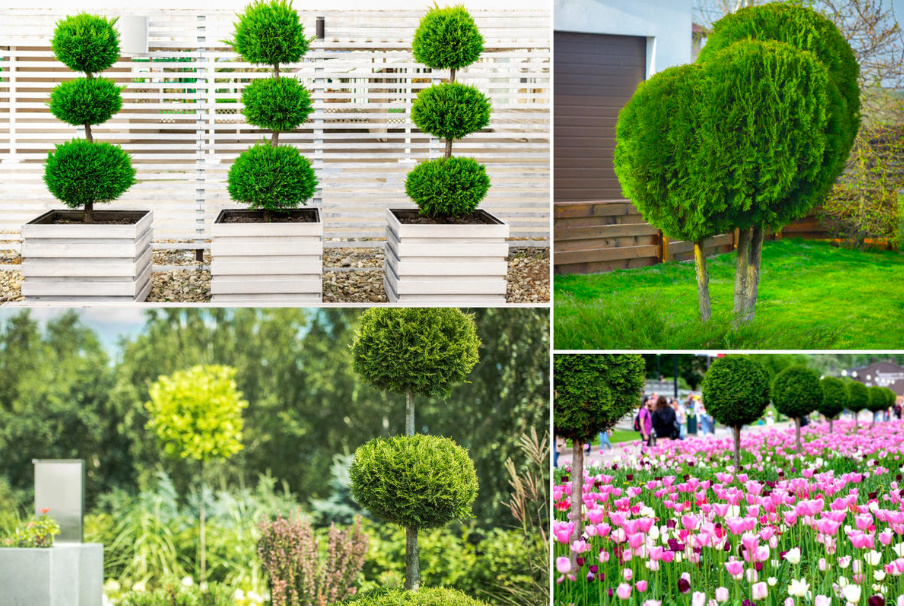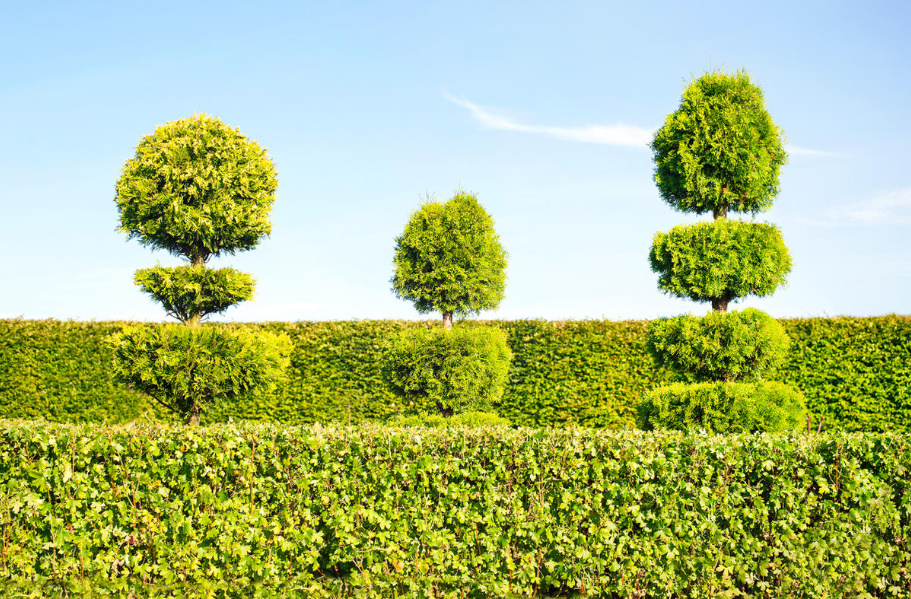It is difficult to find a plot on which at least one Thuja would not grow. And it is even more difficult to find a cottage where well-groomed Thuja appear in all their glory. But this plant is a real find for both designers and amateur gardeners.
A huge variety of Thuja crown shapes allows you to solve the most interesting design tasks. A slender wall of sheared columns will close the site from curious neighbors. Cute well-groomed balls will diversify any landscape flower garden or mixborder, strict cones will emphasize the grandeur of the entrance area or a regular rose garden. And the original figure from Thuja (topiary), which can be created and maintained with your own hands, will attract attention in any corner of the garden.
Usually, the most winter—hardy species dominates gardening – Thuja occidentalis, but at the same time, the variety of its varieties allows you to create an interesting corner of the garden with minimal participation of other plants or even without them at all.
Which Thuja should I plant to create my masterpiece from it
Thuja is primarily a wealth of forms from miniature varieties the size of two palms to trees peering into the windows of the second floor. Thuja are both spherical and slender columnar, there are only weeping and creeping ones. Especially pleasing to the eye are Thuja in the shape of a cone, which can become an alternative to a Christmas tree in small areas. Such, for example, is one of the most beautiful varieties — ‘Smaragd’. However, it is also important to maintain its natural shape with the help of shaping pruning, otherwise the tree will be untidy.
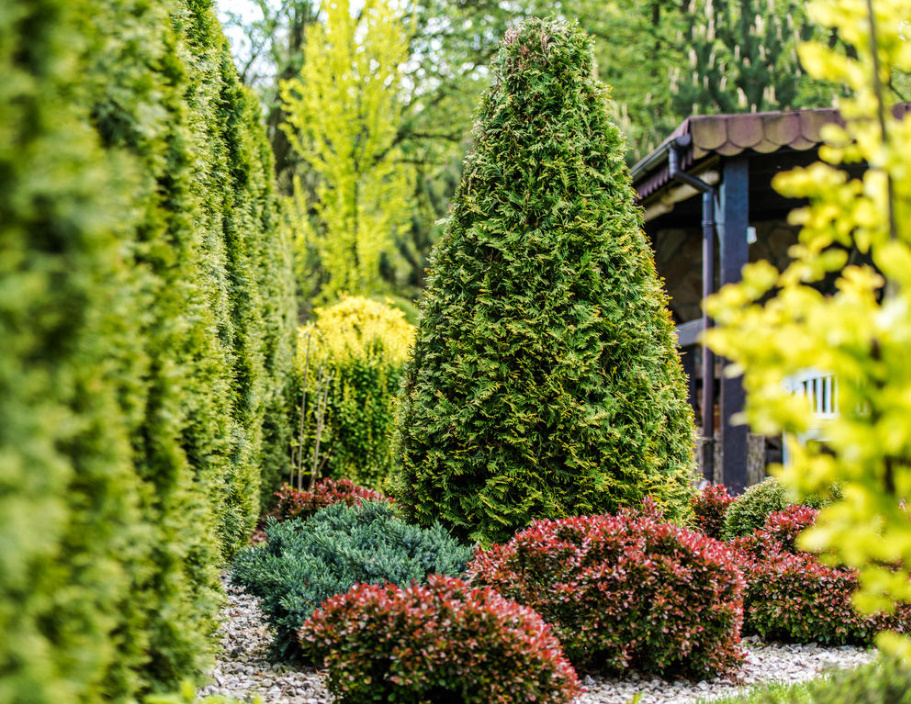
Thuja can also be real “disheveled”. Gardeners of the older generation most often met them — these are quite large trees with a sparse shaggy crown and a trunk diameter that only a chainsaw can handle. The stereotype that Thuja are only like that often prevents gardeners from planting at least one specimen on their site. And in vain!
From modern varieties of Thuja, clipped hedges of the “green wall” style are created, very often the proven Thuja variety of the western ‘Brabant’ is chosen for this purpose. If financial opportunities allow, then for high hedges, more expensive varieties are often chosen, such as the aforementioned ‘Smaragd’ or ‘Fastigiata’, which keep their shape better. All of them are great at pruning branches.
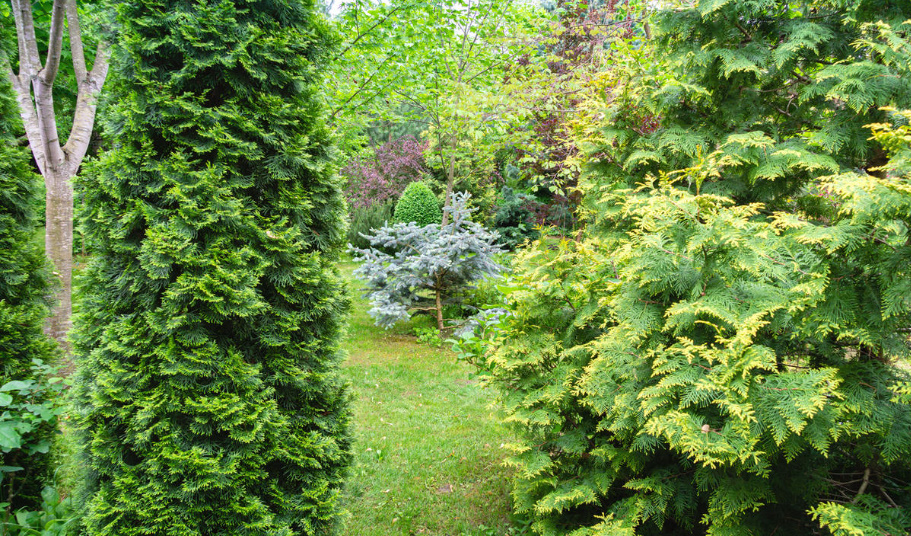
After the haircut, even the “shaggy” Thuja transforms and becomes a real decoration of the site. And varieties that naturally or thanks to the efforts of breeders keep their shape well, regular haircuts will not hurt: the outlines will become clearer, and the plant itself will be neat.
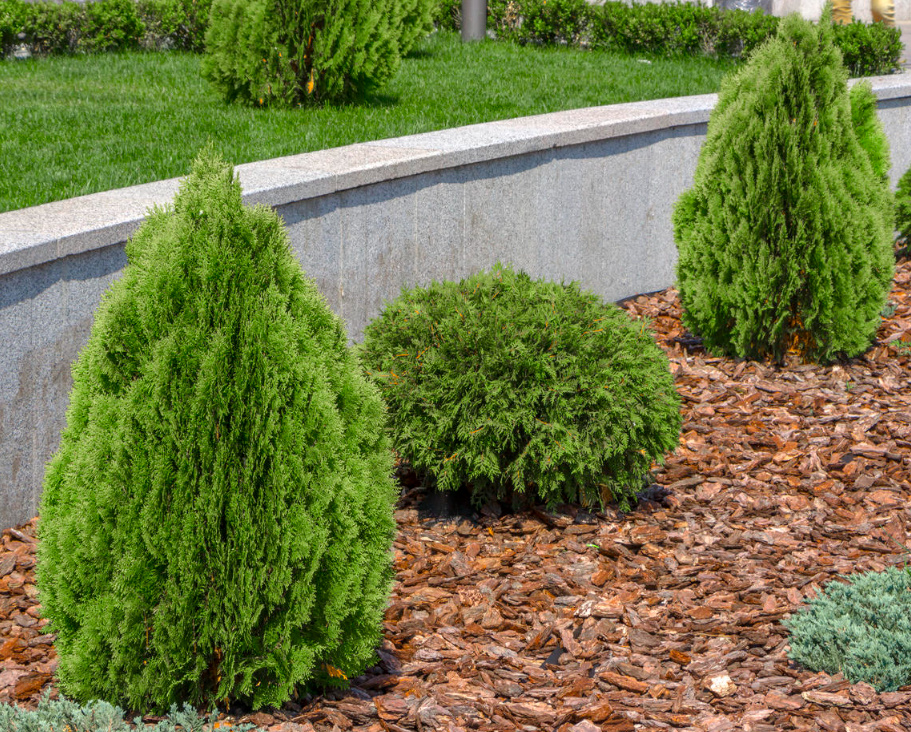
In addition to the variety of natural forms, Thuja can boast of a wealth of colors: its crown pleases with different shades of green, bright yellow, a combination of yellow and green. There are varieties that change the shade of needles for the winter. Unless there are no blue Thuja, and if this color is necessary in the composition, then you will have to add other coniferous plants.

First — proper care!
Clearing the crown is a necessary and simple operation, which is often neglected when caring for Thuja. In autumn, the plant sheds whole twigs. The dead parts are easily recognized by the red color. In most cases, they accumulate in the inner part of the crown. In principle, they are well separated from live twigs, and they are easy to remove with your hands. If necessary, cut the branches with pruning shears, on which there is nothing alive and green.
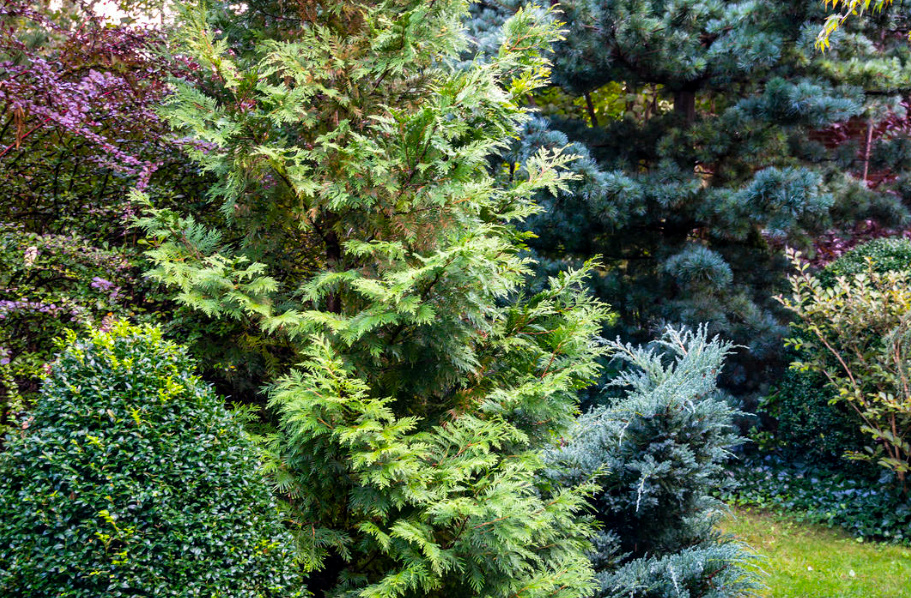
Be sure to give Thuja a good “shake-up”: gently take the stem and shake the crown to remove small dry twigs that have remained unnoticed. Such cleaning of the crown should be done regularly, ideally — 2 times per season: in autumn and spring.
In summer, Thuja should not be disturbed: small birds often arrange nests in the dense crown of large specimens. If the crown has not been cleaned for several years, then after the “shake-up” it will seem loose and delicate. It’s temporary! As soon as the green shoots get more light and opportunities for growth, they will definitely take advantage of it. It is necessary to shake the crown after each haircut to remove the removed parts of the shoots. And don’t forget to feed and water the plants regularly!
How will we get a haircut?
When it comes to artistic topiary haircut, Thuja is often forgotten. Of course, with all the richness of shapes and sizes, alas, it cannot become a full-fledged alternative to boxwood or yew, from which you can create anything. But she is quite capable of simple forms!

5 rules of Thuja haircut
1. Consider the natural shape of the crown of the Thuja variety that you have growing. For ‘Smaragd’ it is a pyramid or a cone, for ‘Danica’ it is a ball or an egg, for ‘Brabant’ it is a ball on a leg (sometimes called a “chupa—chups”), a spiral, a haircut with paws.
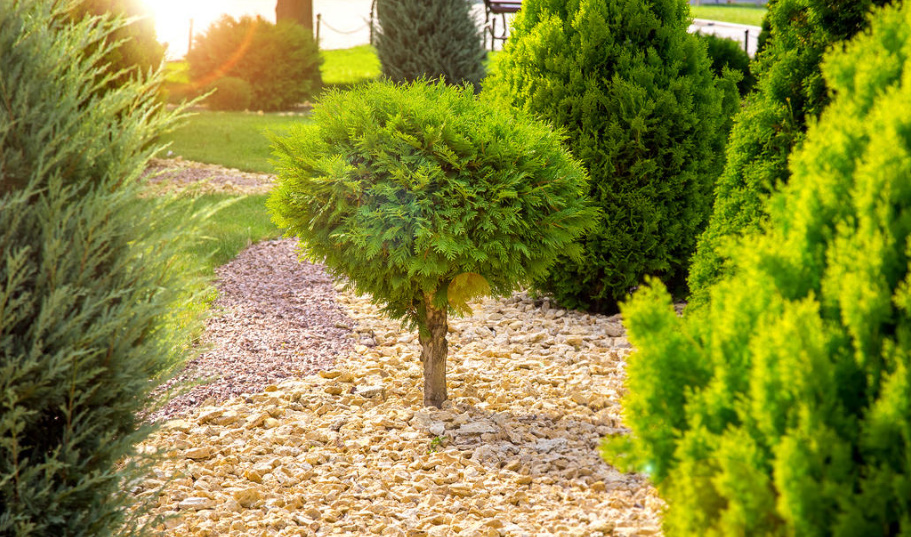
2. Thuja should be trimmed strictly according to the green parts of the shoots. Only there, in the axils of the scaly leaves tightly adjacent to the shoots, there are buds that will wake up later, therefore, further growth and branching of the plant will not stop.
3. It is better to cut more often, but “shoot” just a little bit, than to disfigure the plant and deprive it of a considerable part of the photosynthetic apparatus in one fell swoop.
4. Some varieties tend to form a large number of cones. It is better to remove them before they are ripe. So they will stop pulling nutrients on themselves, and the plant will look neater.
5. Formed hedges and topiary are cut at least 2 times a season, depending on the variety, age and condition of plants, but usually much more often, at least once a month. If your task is to trim the tips a little, “smooth” the shape characteristic of the variety, then it is necessary to do this a couple of times over the summer.
Popular Thuja Haircut Shapes
So, for Thuja it is best to choose simple forms of haircuts. But even making a ball or cone out of a plant that grew and branched by itself is not easy. Therefore, we will suggest a few tricks that will help you.
Cone haircut. To give this shape to the plant, you need a stencil in the form of a triangle made of plywood or thick cardboard, which will be 20-30 cm higher than Thuja. The base of the stencil should be on the ground, you will cut it in parallel from all sides.
For adult tall Thuja, a cone-shaped variety resembling an egg is also suitable. In this case, the bottom of the crown (it may be slightly torn off the ground) and its top are slightly rounded off. Also, stately trees look spectacular in the form of slender columns.
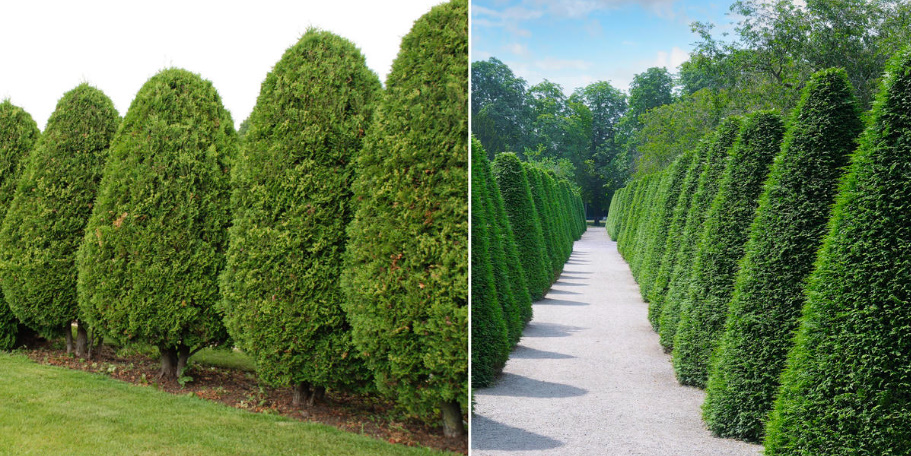
A pyramid-shaped haircut is done in about the same way. But here you can use ropes and pegs as a stencil. From the top of Thuja, lead 4 ropes and fix them on the ground with pegs — these will be the edges of the pyramid. Everything in between is cut into one plane.
At the top of the pyramid, you can form a small ball — you will get a more interesting figure. If you remove the sharp top, you get a nice truncated pyramid.
Haircut with “paws”. This shape is very similar to a garden bonsai. The side parts are cut off alternately, leaving paws — balls or “clouds” at the ends of the branches. You can tie a load to the branches so that they deviate beautifully to the sides.
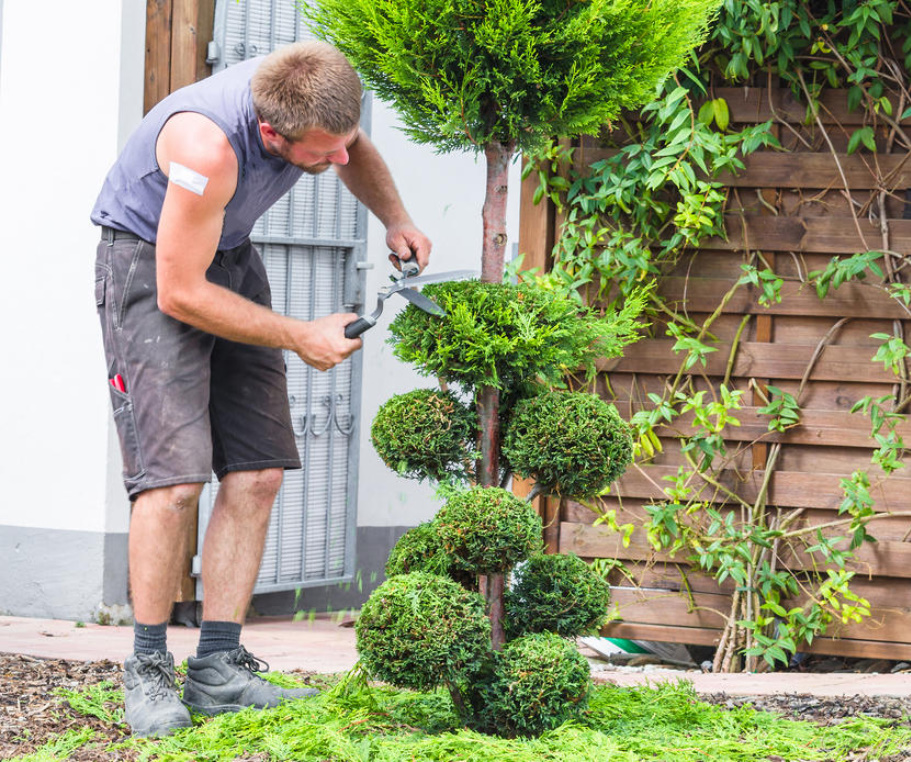
A spiral-shaped haircut is very popular and attractive. For her, you need to choose a Thuja that has only one straight trunk — or several tightly connected to each other.
Tie a rope to the top of Thuja and wrap it around the plant several times. Fix the rope on the ground or container. The rope is the contour of the future spiral, so arrange it as beautifully as possible (from your point of view). You can additionally apply paint on the rope (it is convenient to use an aerosol), so you will know better where to cut. And now cut the plant perpendicular to the trunk right along the line of the rope. In the first haircut, you can only outline a plan for future work, and then bring the work to perfection.
In this way, it is better to start forming a young plant that has gained strength and height. Varieties with dense needles will look ideal.
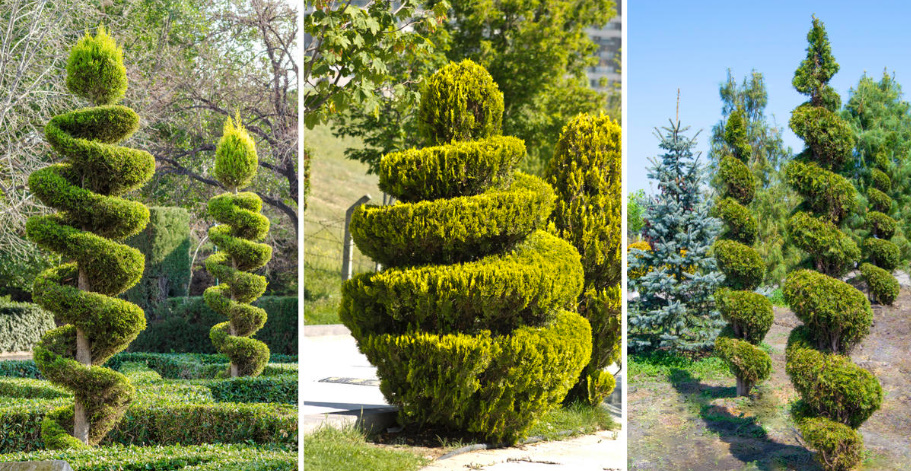
A spherical haircut seems simple, but in fact it is one of the most difficult. For her, it is worth choosing Thuja, which, according to the characteristics of the variety, already has a round shape. To achieve the perfect shape, make a wire stencil and cut off everything that goes beyond its boundaries.
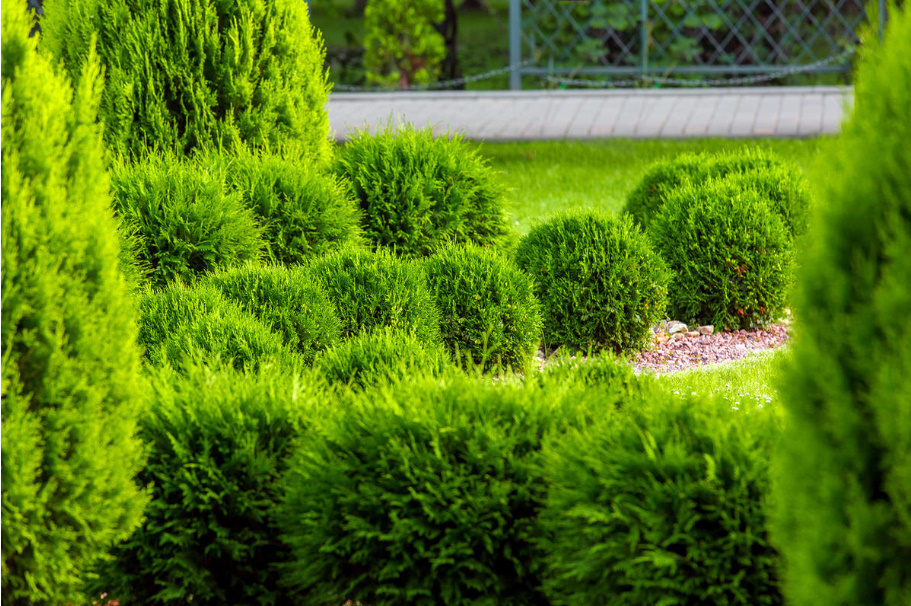
The ball from Thuja can also be lifted off the ground on the stem. And on one axis, you can form several spheres or cut a ball on each trunk of an adult plant.
